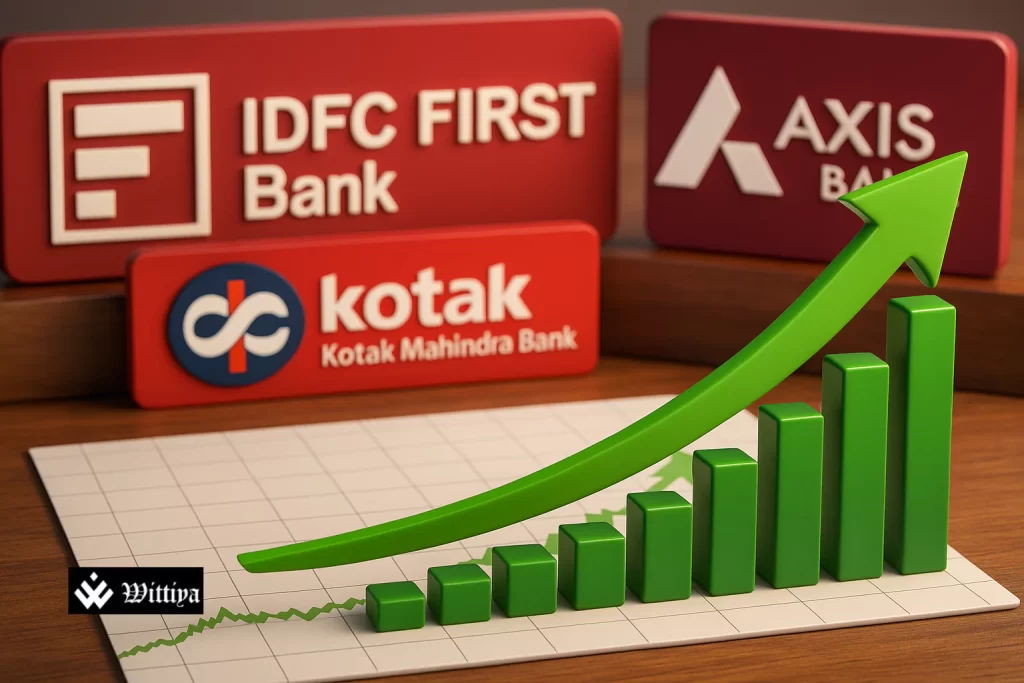The Indian stock market saw a continued rally on June 9, 2025, as the Nifty Bank index crossed the historic 57,000 mark. This surge was largely driven by financial stocks following unexpected monetary easing measures by the Reserve Bank of India (RBI), including a 50 basis point cut in the repo rate and a surprise 100 basis point cut in the Cash Reserve Ratio (CRR). Mid-sized private banks and NBFCs are expected to benefit most from the improved liquidity conditions. Analysts remain cautiously optimistic about the sector’s earnings outlook for FY26.
Indian financial markets extended their upward momentum on June 9, 2025, as the Nifty Bank index reached a record high of 57,049 points. The rally was driven primarily by banking stocks following unexpected monetary easing measures announced by the Reserve Bank of India (RBI), the country’s central bank headquartered in Mumbai, Maharashtra.
The RBI implemented a deeper-than-expected 50 basis point cut in the repo rate alongside a surprising 100 basis point reduction in the Cash Reserve Ratio (CRR) last week. These moves are part of the RBI’s broader efforts to enhance liquidity in the banking system and stimulate credit growth to support the Indian economy.
On June 9, all 12 constituents of the Nifty Bank index opened in positive territory. Shares of prominent banks such as IDFC First Bank, Kotak Mahindra Bank, and Axis Bank rose by as much as 3%, helping push the index above the 57,000 threshold for the first time.
Over the past five months, the RBI has infused over ₹7 lakh crore into the banking system through Open Market Operations (OMO) to counter liquidity pressures. As a result, the banking sector moved from a deficit to surplus liquidity position in April 2025.
Bank credit growth moderated to 12% year-on-year in March 2025, compared to 16.3% in the same period last year, indicating cautious lending behavior amid broader economic conditions.
Mid-sized Banks and NBFCs to Gain Most
Global brokerage firms, including Nomura and UBS, have noted that mid-sized private banks such as AU Small Finance Bank, IndusInd Bank, and IDFC First Bank are likely to benefit the most from the improved liquidity conditions. Large banks like HDFC Bank and Axis Bank are also expected to gain, especially those facing deposit growth constraints.
Additionally, fixed-rate lenders such as Mahindra Finance, Chola Finance, and SBI Cards could see potential improvements in their net interest margins (NIMs), with Bajaj Finance, Chola, and Shriram Housing Finance highlighted as top picks by analysts at Jefferies.
Bernstein and Citi have expressed a positive outlook on the banking sector, with Citi emphasizing durable liquidity as a sentiment booster for large private lenders. The CRR cut is expected to inject liquidity worth approximately ₹2.5 trillion, according to assessments by IIFL and Goldman Sachs.
IIFL noted, “Frontloading of monetary easing implies nervousness regarding GDP growth. While banks flush with more liquidity are expected to lend more, loan growth is likely to remain moderate at 11-11.5% in FY26.”
The RBI’s aggressive easing signals its commitment to supporting economic growth while maintaining financial stability.
